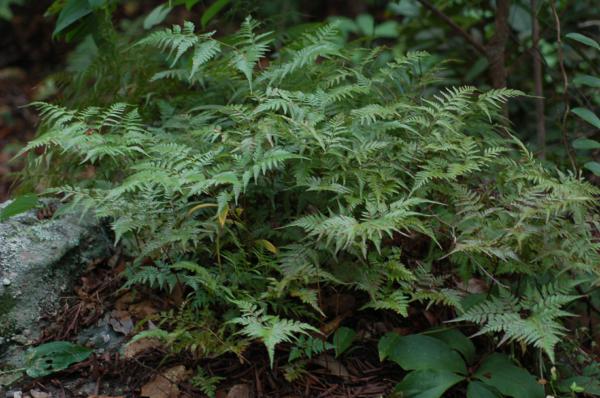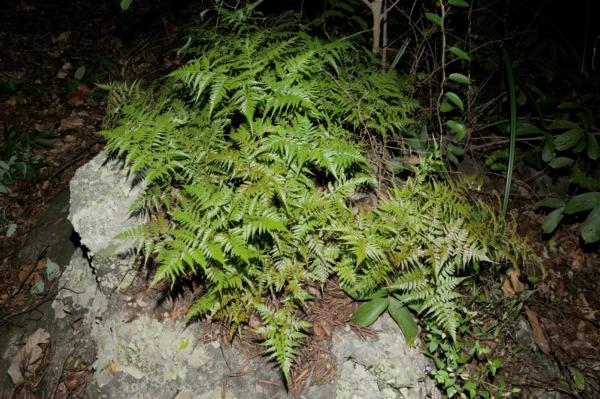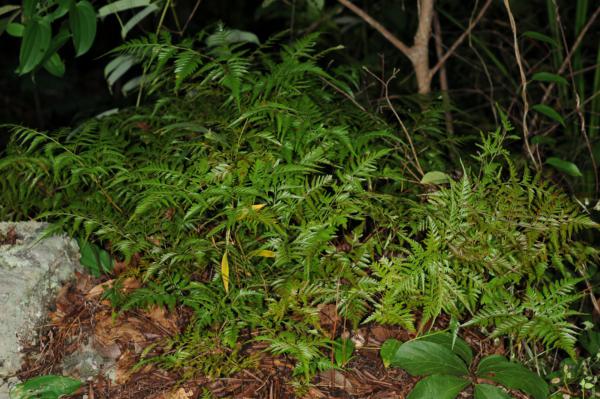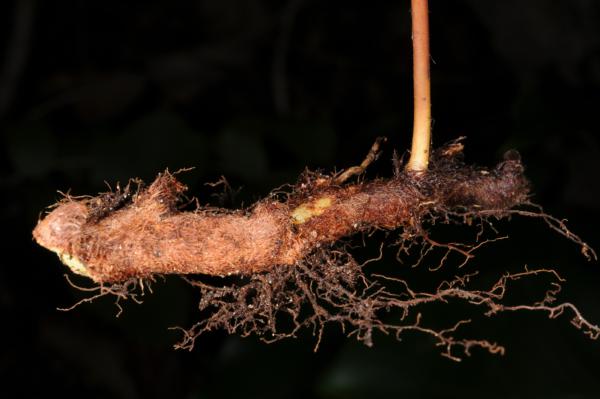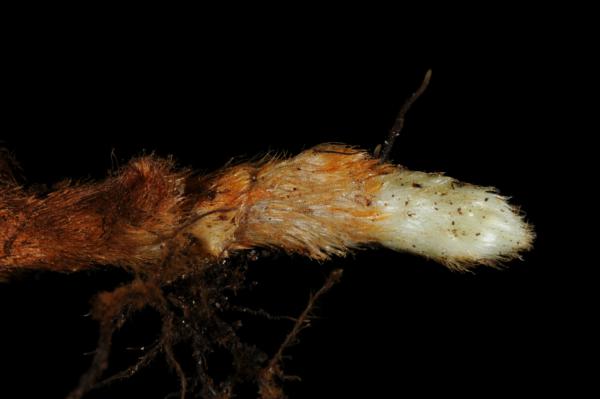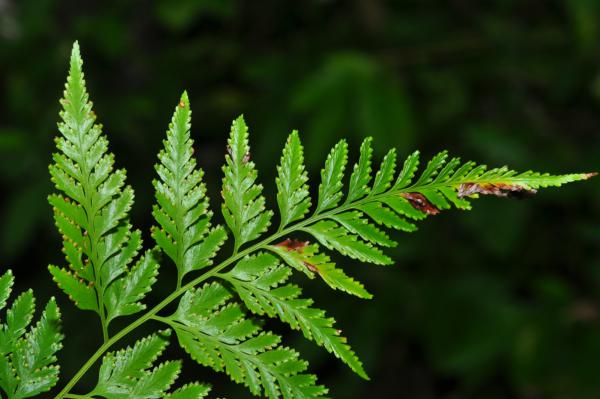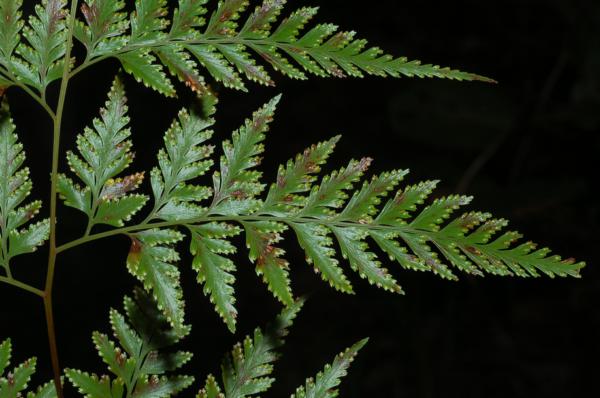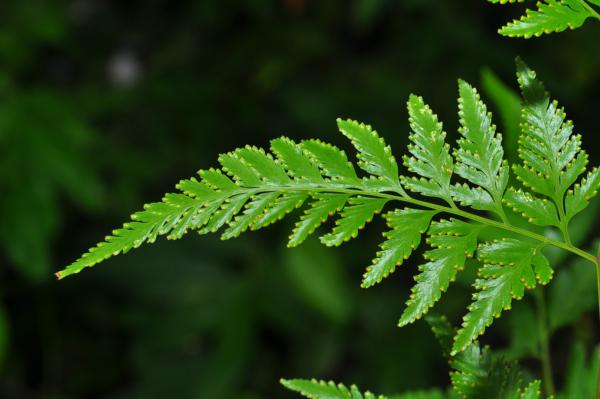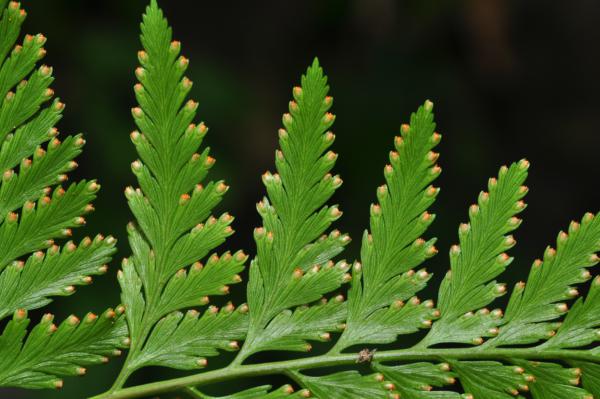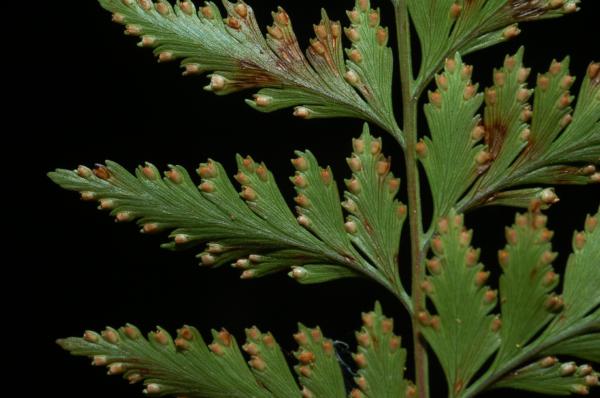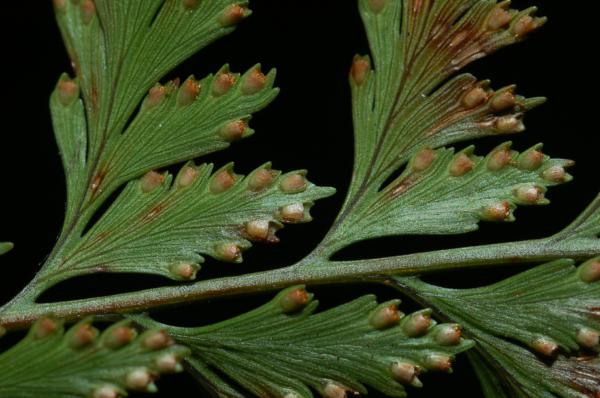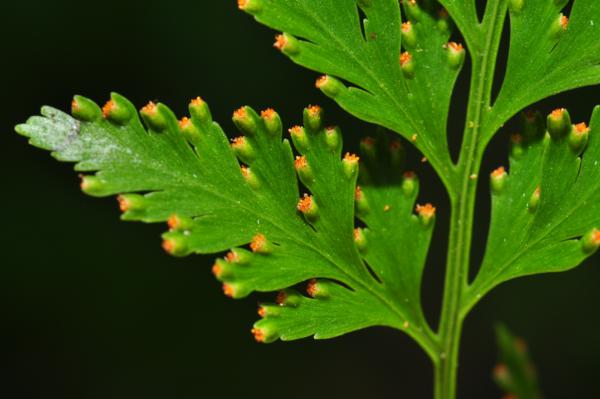
Davallia denticulata (Burm.f.) Mett. ex Kuhn
Family
Davalliaceae
Nomenclature
Davallia denticulata (Burm.f.) Mett. ex Kuhn, Filic. Decken.: 27. 1867; C.Chr., Bot. Tidsskr. 32: 345. 1916; Tardieu & C.Chr., Fl. Indo-Chine 7(2): 107. 1939; Holttum, Rev. Fl. Malaya ed. 1, 2: 359, f. 206. 1955 [‘1954’]; Holttum, Dansk Bot. Ark. 23: 234. 1965; Seidenf., Nat. Hist. Bull. Siam Soc., 19: 86. 1958; Ching, Fl. Reipubl. Popularis Sin. 2: 298. 1959; Tagawa & K.Iwats., SouthE. Asian Stud. 3(3): 82. 1965; Tagawa & K.Iwats., Acta Phytotax. Geobot. 23: 54. 1968; T.Sen, U.Sen & Holttum, Kew Bull. 27: 219. 1972; Tagawa & K.Iwats., Fl. Thailand 3: 160. 1985; Nooteboom, Fl. Males., Ser. II, Ferns and Fern Allies 3: 250. 1998; Boonkerd & Pollawatn, Pterid. Thailand: 233. 2000; Newman et al., Checkl. Vasc. Pl. Lao PDR: 26. 2007. – Adiantum denticulatum Burm.f., Fl. Ind.: 236. 1768. – Wibelia denticulata (Burm.f.) M.Kato & Tsutsumi, Acta Phytotax. Geobot. 59(1): 13. 2008. – Type: Pryon s.n., Java.
Davallia elegans Sw., Schrad. J. Bot. 1800(2): 87. 1801; Bedd., Handb. Ferns Brit. India: 59. 1883; Christ, Bot Tidsskr. 24: 110. 1901; Hosseus, Beih. Bot. Centralbl. 28(2): 364. 1911.
Description
Rhizome long creeping, about 5 mm diam., densely scaly throughout; scales ovate at base and abruptly narrowing to long, patent tails, the base up to 1.5 mm wide and long, more or less appressed, the tails up to 5 by 0.2 mm brown to dark brown, minutely toothed at margin. Stipes brown, terete, up to 40(–50) cm long, glabrous. Laminae subtriangular, gradually narrowing towards acuminate apex, quadripinnatifid to quadripinnate, up to 60(–90) by 50 cm; all pinnae anadromous; basal pinna subtriangular, broadly cuneate at base, stalked, up to 35 cm long, 30 cm wide; pinnules and secondary pinnules stalked or upper smaller ones subsessile, oblong to oblong-subdeltoid, moderately acute to acuminate, ultimate segments (3rd pinnules) oblong, oblique, round at apex, narrowly cuneate and decurrent at base, lobed at margin; lobes acute, about 0.4 mm broad, thin but fairly stiff, green; veins distinct on the lower surface; false veinlets present but not always clearly visible. Sori small, placed at very margin of lobes; indusia cup-shaped, up to 0.7 by 0.4 mm, variable in size and form .
Distribution in Thailand
NORTH-EASTERN: Loei; EASTERN: Nakhon Ratchasima, Ubon Ratchathani; SOUTH-WESTERN: Kanchanaburi, Prachuap Khiri Khan; CENTRAL: Nakhon Nayok; SOUTH-EASTERN: Chon Buri, Trat; PENINSULAR: Ranong, Surat Thani, Phangnga, Krabi, Nakhon Si Thammarat, Trang, Satun, Yala, Narathiwat.
Distribution in Laos
Champasak.
Distribution in Cambodia
Pursat
Wider Distribution
Widely distnibuted in the tropics of the Old World, Madagascar to Polynesia and Australia, north to Laos, Hainan and Guangdong.
Ecology
On dry rocks or on tree trunks in evergreen forests or half-shaded places at altitudes below 200 m, or rarely 500 m.
Proposed IUCN Conservation Assessment
Least Concern (LC). This species is widespread and not under any known threat.
Voucher specimens - Thailand
Middleton et al. 5193, Ubon Ratchathani, Phu Chong Nayoi National Park (E).
Voucher specimens - Laos
Maxwell 97-1146, Champasak (CMU)
Voucher specimens - Cambodia
Godefroy 377, Pursat (P).
Habit
Habit
Habit
Rhizome
Growing tip of rhizome
Frond apex
Upper surface of lamina
Pinna
Lower surface of lamina
Lower surface of lamina
Sori
Mature sori
Site hosted by the Royal Botanic Garden Edinburgh. Content managed by Stuart Lindsay, Gardens by the Bay, Singapore and David Middleton, Singapore Botanic Gardens. Last updated 24 January 2012
